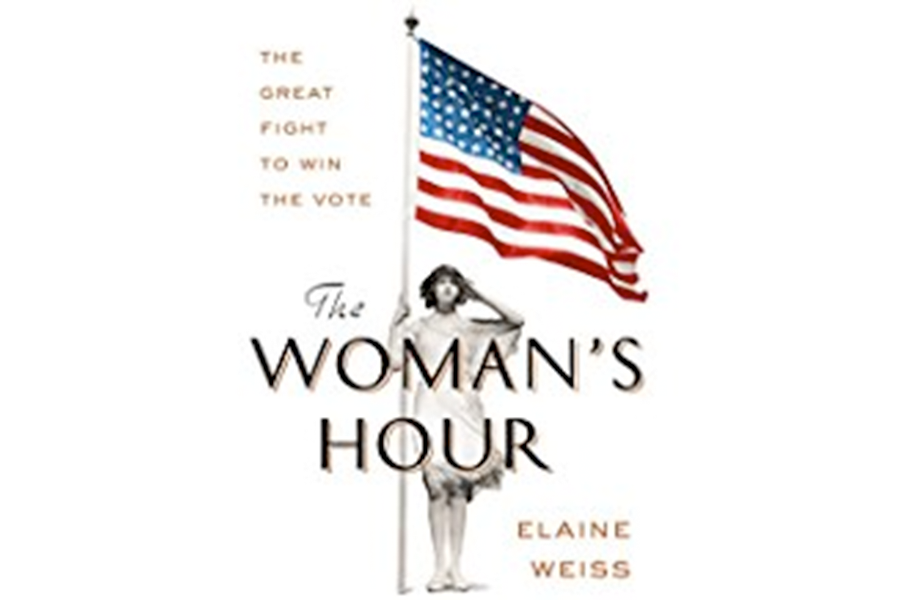'The Woman's Hour' wonderfully recalls the furious fight to ratify the Nineteenth Amendment
Loading...
This year, more than 400 women are considered likely candidates for US Congress, while another 79 are exploring runs for state governorships as of the beginning of this year. It’s a grass-roots movement also known as “the pink wave,” and some Americans are hoping that it will change the country, if not the world.
If only Carrie Chapman Catt were here to see it.
Catt is one of the principal players in The Woman’s Hour, award-winning writer Elaine Weiss’s excellent book about the last-minute dramatics surrounding the 1920 ratification of the 19th Amendment granting American women the right to vote.
Looking back today, we marvel that it took until 1920 for women to gain their full rights as United States citizens. But it’s easy to forget that at the time, the conferral of that right was anything but certain. In fact, Weiss’s narrative is an out-and-out nail-biter.
Up until the very last moment, the “Suffs” (the suffragists, of whom Catt was a leader) were in despair. The “Antis” (a formidable group opposed to women’s suffrage headed up by a highly educated college professor named Josephine Pearson) had mounted a fierce and very effective attack against the amendment, and it looked as if they very well might succeed.
“The Woman’s Hour” focuses on a few tense weeks in the summer of 1920. Thirty-five American states had ratified the 19th Amendment. Thirty-six “yes” votes were needed to make the amendment law, and now Tennessee’s moment of decision was at hand with a vote scheduled for August.
Weiss sets the stage, writing, “If the Tennessee legislature ratified the Nineteenth Amendment, woman suffrage would become the law of the land and twenty-seven million women would be able to vote, just in time for the fall presidential elections; if the legislature rejected it, the amendment might never be enacted. It all came down to Tennessee.”
Starting in mid-July, Suffs and Antis from around the country began converging on Nashville.
Catt, a former school superintendent and the anointed heir of Susan B. Anthony, had already devoted three decades of her life to this battle. The evening she arrived in Nashville by train from New York she was weary and discouraged. “At this time, I do not believe that there is a ghost of a chance of ratification in Tennessee,” she wrote to a friend.
Pearson, the champion of the Antis, was by contrast thrilled by the telegram that called her to Nashville from her home in southeastern Tennessee. “She knew she was doing God’s will,” Weiss writes, “fulfilling a sacred vow to her beloved mother, who had understood the dangers of female suffrage, how it mocked the plan of the Creator, undermined women’s purity and the noble chivalry of men, and threatened the home and the family.”
But talk of chivalry and purity – as genuine as that was on the part of many Antis – masked the real struggle in Tennessee that summer. The most powerful force behind the battle over female suffrage was race. If the 19th Amendment allowed women to vote, that would include black women.
“This amendment will not only hurl women into political competition and battle with men,” read an ad the Antis ran in The Tennessean on the day of the vote, “but it will and must involve political warfare between the races – a thing that no thinking American, white or black, should advocate.”
There was scheming, double-dealing, and flip-flopping up to the last moment. Weiss tells the story in gripping detail. We all know, of course, how the vote ended, but most modern readers will be astonished to learn exactly how it all went down.
Weiss wonderfully describes the drama in the Tennessee statehouse that day: crowds packed into the visitors’ gallery, the Suffs draped in saffron, and the Antis wearing red flowers. When the vote finally came, a mother’s letter and a last-minute defection were game changers so unexpected that for a few minutes history reads like outlandish fiction.
On Nov. 2, 1920, about 10 million American women voted in the election that brought Warren G. Harding to the White House. Almost two-thirds of eligible women chose not to vote, but Catt rightly predicted that the League of Women Voters – which she founded earlier that year – would gradually bring women voters into the system.
Catt, who died in 1947, went on to spend the rest of her life fighting the persecution of Jews in Europe. On Election Day 2016 – when for the first time a woman was the presidential candidate of a major US political party – thousands of women visited the gravestones of Catt, Anthony, and other suffragists, paying silent tribute with their I VOTED stickers.
Would Catt have been disappointed that it took almost a century for such an event to occur? Perhaps, but probably not surprised.
Marjorie Kehe is The Christian Science Monitor’s books editor.






